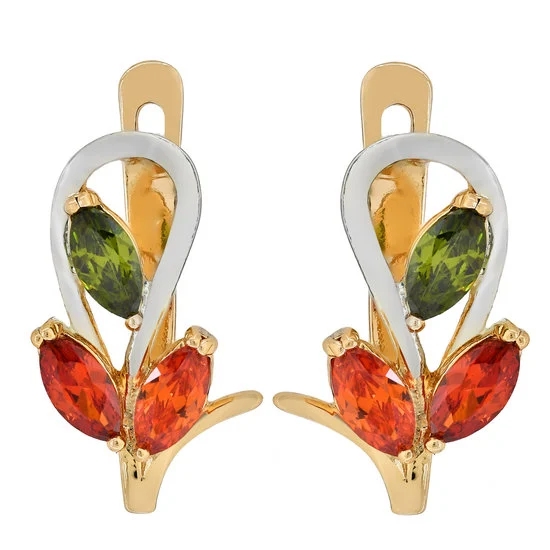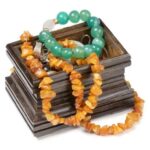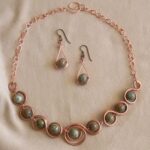Is it okay to sell handmade jewelry at wholesale price? This is a question that many artisans and jewelry makers grapple with as they consider expanding their business and reaching a wider market.
In this article, we will delve into the concept of selling handmade jewelry at wholesale price, discussing the potential benefits and drawbacks for both artisans and businesses. By exploring the handmade jewelry market, understanding customer preferences, and examining the factors to consider before pursuing wholesale selling, we aim to provide insight and guidance for those navigating this aspect of the industry.
Selling handmade jewelry at wholesale price involves various considerations that go beyond simply creating beautiful pieces. Artisans must understand their target audience and customer preferences in order to effectively market their products in a wholesale setting. Additionally, they must weigh the pros and cons of wholesaling, considering factors such as production capacity, pricing, and market demand. By strategically approaching wholesale selling, artisans can protect their brand and craftsmanship while building successful partnerships with retailers.
In this comprehensive exploration of the topic, we will address strategies for maintaining quality and reputation in a wholesale setting, as well as alternative distribution channels for handmade jewelry such as online marketplaces and direct-to-consumer sales. As we navigate through these discussions, our goal is to provide valuable insights for artisans and businesses looking to make informed decisions about selling their handmade jewelry at wholesale price.
Understanding the Handmade Jewelry Market
When considering the sale of handmade jewelry at wholesale price, it is crucial to understand the dynamics of the handmade jewelry market. This involves identifying the target audience and understanding customer preferences in order to effectively cater to their needs.
Target Audience Identification
Understanding the target audience for handmade jewelry involves looking into demographics such as age, gender, and lifestyle preferences. For example, younger consumers may be more drawn to trendy and colorful pieces, while older demographics may appreciate classic and timeless designs. By pinpointing the specific groups that are most likely to purchase handmade jewelry, artisans and businesses can tailor their products and marketing strategies accordingly.
Customer Preferences
In addition to identifying the target audience, it is essential to grasp customer preferences within the handmade jewelry market. This includes recognizing popular materials, styles, and themes that resonate with potential buyers. Whether it’s sterling silver pieces or bohemian-inspired designs, being attuned to what customers are looking for can greatly influence the success of selling handmade jewelry at wholesale price.
By understanding the dynamics of the handmade jewelry market and gaining insights into the target audience and customer preferences, artisans can create products that are well-aligned with market demand. This also allows for a more strategic approach when pricing and positioning their handmade jewelry within the wholesale market.
Pros and Cons of Selling Handmade Jewelry at Wholesale Price
Selling handmade jewelry at wholesale price can be a strategic decision for artisans and businesses looking to expand their reach and increase sales. However, this approach comes with its own set of pros and cons that must be carefully considered before making the leap into wholesale distribution.
Advantages of Selling Handmade Jewelry at Wholesale Price
One of the main advantages of selling handmade jewelry at wholesale price is the potential for larger volume sales. By offering your products at a lower price per piece, you may attract retailers and resellers who are looking to stock up on unique, artisanal items. This can result in increased brand exposure and market presence, ultimately leading to more opportunities for growth and recognition.
Another benefit is the ability to establish ongoing partnerships with retailers. Selling at a wholesale level allows you to build relationships with various stores, boutiques, and online platforms that can showcase and sell your handmade jewelry. This direct access to different distribution channels can broaden your customer base and create consistent revenue streams for your business.
Disadvantages of Selling Handmade Jewelry at Wholesale Price
On the flip side, selling handmade jewelry at wholesale price means accepting lower profit margins per item. While the potential for higher volume sales exists, it’s essential to carefully calculate whether the reduced margins will still generate enough revenue to sustain your business operations and cover production costs.
Additionally, maintaining quality control becomes more challenging when producing larger quantities of handmade jewelry for wholesale purposes. As an artisan or small business owner, ensuring that each piece retains its unique craftsmanship and authenticity can be difficult when faced with increased production demands. It is important to consider how scaling up production will impact the integrity of your brand and product offerings.
Considering these pros and cons is crucial when deciding whether selling handmade jewelry at wholesale price is the right move for you as an artisan or business owner. Each aspect should be carefully evaluated in relation to your specific circumstances, goals, and resources before pursuing wholesale distribution.
Factors to Consider Before Selling Handmade Jewelry at Wholesale Price
Selling handmade jewelry at wholesale price can be an attractive option for artisans and businesses looking to reach a wider audience and increase their sales volume. However, before venturing into wholesale, it is important to carefully consider several factors to ensure that this business decision is viable and sustainable.
Pricing is a crucial aspect to consider when selling handmade jewelry at wholesale. It is essential to determine the cost of production, including materials, labor, and overhead expenses, in order to set a wholesale price that allows for a reasonable profit margin. Additionally, researching the market and understanding the pricing strategies of competitors can provide valuable insight into setting competitive wholesale prices.
Another factor to take into account is production capacity. When selling at wholesale, there is often a higher demand for inventory from retailers or resellers. This means that artisans and businesses must assess whether they have the capability to meet larger production needs while maintaining the quality and craftsmanship of their handmade jewelry. It may be necessary to streamline production processes or explore outsourcing options in order to fulfill wholesale orders effectively.
Market demand is also a critical consideration before selling handmade jewelry at wholesale price. Evaluating the current demand for handmade jewelry within the target market can help determine the potential success of selling at a wholesale level. Understanding consumer preferences, trends, and purchasing behaviors can guide decisions regarding which products to offer at wholesale and how to position them in the market.
Considering these factors before making the leap into selling handmade jewelry at wholesale price can help artisans and businesses make informed decisions that support their long-term success in the industry.
| Factors | Description |
|---|---|
| Pricing | Determining cost of production and setting competitive wholesale prices |
| Production Capacity | Assessing capability to meet larger production needs while maintaining quality |
| Market Demand | Evaluating consumer preferences and purchasing behaviors within target market |
Protecting Your Brand and Craftsmanship
Selling handmade jewelry at wholesale price can be a beneficial opportunity for artisans and businesses looking to reach a larger audience and increase their sales. However, it is essential to consider how this decision can impact the brand’s reputation and the quality of craftsmanship. Here are some factors to consider when protecting your brand and craftsmanship while selling at a wholesale level:
1. Quality Control: When selling handmade jewelry at wholesale price, maintaining consistent quality is crucial. Implementing strict quality control measures will ensure that each piece meets the standards that customers expect from your brand.
2. Brand Representation: It is important to communicate your brand’s story, values, and unique selling points to retailers and resellers. Providing them with comprehensive information about your craftsmanship and the materials used in your jewelry will help maintain the integrity of your brand.
3. Communication with Partners: Building strong relationships with retailers and resellers is key in ensuring that your brand’s reputation is upheld. Open communication regarding any concerns or feedback regarding the handling and presentation of your products is essential for preserving the quality of your handmade jewelry.
By prioritizing quality control, effectively representing your brand, and fostering open communication with partners, you can protect your brand’s reputation and maintain the high level of craftsmanship associated with handmade jewelry even when sold at a wholesale price.
Ultimately, embracing these practices allows artisans and businesses to expand their reach without compromising their dedication to producing exceptional handmade jewelry pieces. However, it is crucial to remember that finding a balance between meeting demand and upholding craftsmanship is a continuous process that requires careful attention and consideration from all parties involved in the selling process.
Building Relationships With Retailers
Selling handmade jewelry at wholesale price can be a profitable venture for artisans and businesses, but it comes with its own set of challenges and considerations. One crucial aspect to consider is building relationships with retailers and resellers to successfully distribute and sell handmade jewelry on a larger scale.
One strategy for establishing successful partnerships with retailers is to understand their target audience and customer preferences. By researching the type of customers that frequent the retail locations where you hope to sell your handmade jewelry, you can tailor your products to suit their tastes. This may involve creating exclusive or custom pieces for certain retailers, or adjusting your designs to align with specific market trends.
Another important factor to consider is pricing and production capacity. When selling at wholesale price, it’s essential to determine your production capacity and ensure that you can meet the demand from retailers. Additionally, setting the right wholesale pricing strategy is crucial for maintaining profitability while offering competitive prices to retailers.
Quality control is also paramount when entering into partnerships with retailers. It’s important to maintain the same level of craftsmanship and attention to detail in every piece of handmade jewelry, despite increasing production levels. This not only protects your brand reputation but also ensures that customers receive high-quality products when purchasing from retail locations.
| Factors | Considerations |
|---|---|
| Understanding target audience | Tailoring products to suit customer preferences |
| Pricing and production capacity | Determining production capability & setting competitive wholesale prices |
| Quality control and reputation protection | Maintaining craftsmanship and brand reputation at higher production levels. |
Alternative Distribution Channels for Handmade Jewelry
Selling handmade jewelry at wholesale price can be a strategic decision for artisans and businesses looking to reach a wider audience and increase their sales volume. However, it is important to consider alternative distribution channels beyond traditional retail outlets.
Online marketplaces have become increasingly popular for selling handmade items, offering access to a global customer base and the potential for higher profits. Direct-to-consumer sales, through e-commerce platforms or social media, also provide opportunities for artisans to connect with their target audience and build brand recognition.
Online marketplaces such as Etsy, Amazon Handmade, and eBay provide a platform for artisans to showcase their handmade jewelry to a larger audience. These platforms offer various tools and features to help sellers manage their inventory, process payments, and fulfill orders. By leveraging the reach of these online marketplaces, artisans can expand their customer base beyond their local or regional markets.
In addition to online marketplaces, direct-to-consumer sales through e-commerce websites or social media platforms can be an effective way to sell handmade jewelry at wholesale price. Artisans can create their own branded website or utilize social media platforms like Instagram or Facebook to showcase their products and engage directly with potential customers. By utilizing digital marketing strategies and creating compelling content, artisans can effectively promote their products and generate sales without relying on traditional retail channels.
Overall, exploring alternative distribution channels such as online marketplaces and direct-to-consumer sales can provide new opportunities for selling handmade jewelry at wholesale price. By tapping into the potential of digital platforms, artisans can expand their reach, build brand recognition, and create sustainable growth for their businesses in the competitive market of handmade jewelry.
Conclusion
In conclusion, the decision to sell handmade jewelry at wholesale price is a complex one that requires careful consideration of various factors. While selling at wholesale can provide opportunities for reaching a wider market and increasing sales volume, it also comes with its own set of challenges.
Understanding the handmade jewelry market and identifying the target audience is critical in determining the feasibility of wholesale selling. It is important to weigh the pros and cons, as well as consider factors such as pricing, production capacity, and market demand before making this decision.
Protecting your brand and craftsmanship is essential when selling at a wholesale level. Maintaining quality and reputation while offering competitive pricing is a delicate balance that must be managed effectively. Additionally, building strong relationships with retailers and resellers is crucial for successful partnerships in the wholesale market. Establishing clear communication, reliable delivery, and consistent product quality are key in maintaining these relationships.
While traditional retail channels are an option for selling handmade jewelry at wholesale price, exploring alternative distribution channels such as online marketplaces and direct-to-consumer sales can also provide valuable opportunities. By diversifying distribution channels, artisans can tap into new markets and reach a broader customer base. Ultimately, selling handmade jewelry at wholesale price requires thorough research, strategic planning, and meticulous execution to achieve success in today’s competitive market.
Frequently Asked Questions
How to Sell Wholesale Handmade Jewelry?
Selling wholesale handmade jewelry can be done by reaching out to retailers, attending trade shows, or using online platforms like Etsy Wholesale. It’s important to have a well-defined brand and unique designs to attract potential buyers.
What Percentage Is Wholesale for Jewelry?
The percentage for wholesale jewelry can vary, but typically it ranges from 40-60% off the retail price. This allows retailers to make a profit when selling the jewelry in their stores while still offering customers a competitive price.
What Is the Best Place to Sell Handmade Jewelry?
The best place to sell handmade jewelry depends on your target market and personal preferences. Online platforms like Etsy or Amazon Handmade offer a wide reach, while local craft fairs or artisan markets provide a more personal touch and direct interaction with customers.
Ultimately, it’s important to choose a venue where your jewelry will be seen by potential buyers who appreciate its craftsmanship and uniqueness.

Welcome to my jewelry blog! My name is Sarah and I am the owner of this blog.
I love making jewelry and sharing my creations with others.
So whether you’re someone who loves wearing jewelry yourself or simply enjoys learning about it, be sure to check out my blog for insightful posts on everything related to this exciting topic!





